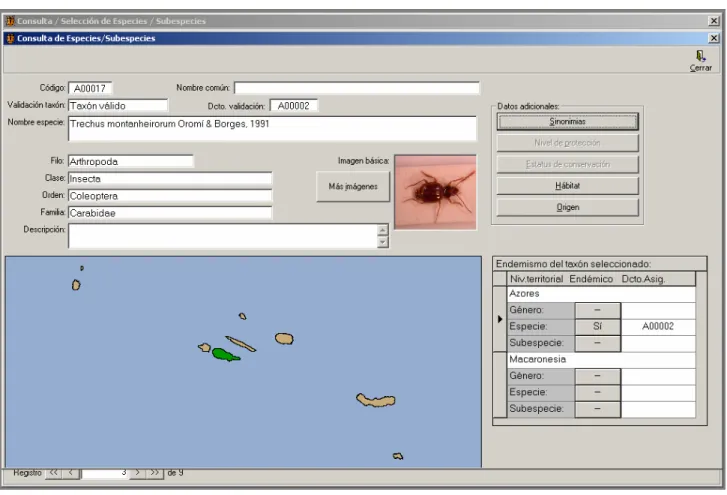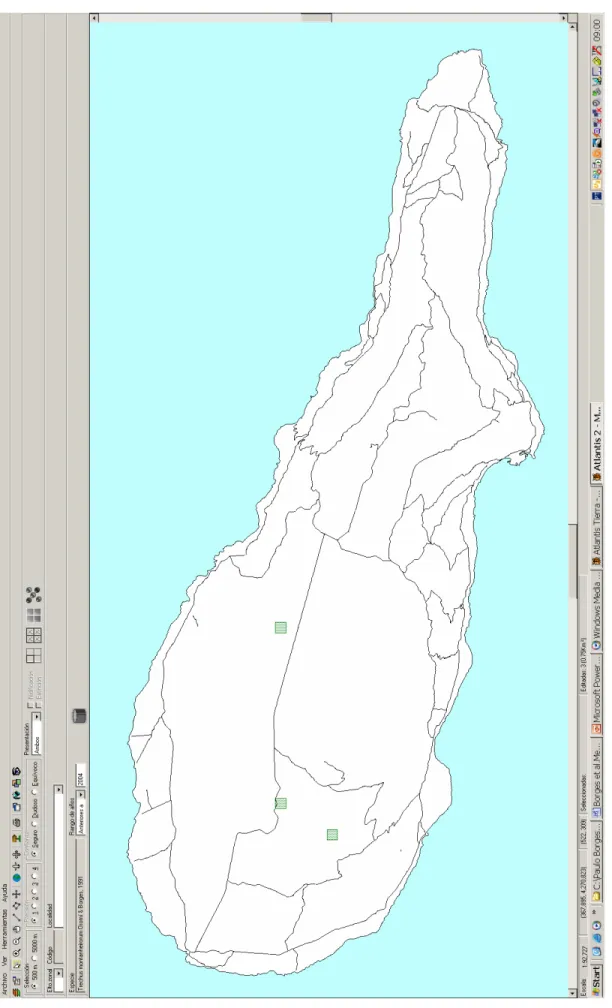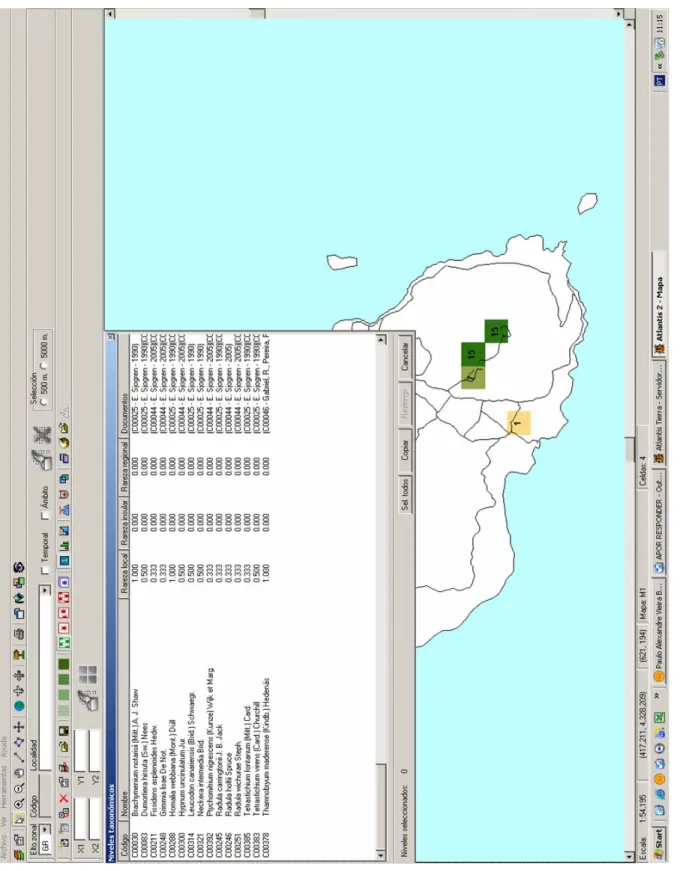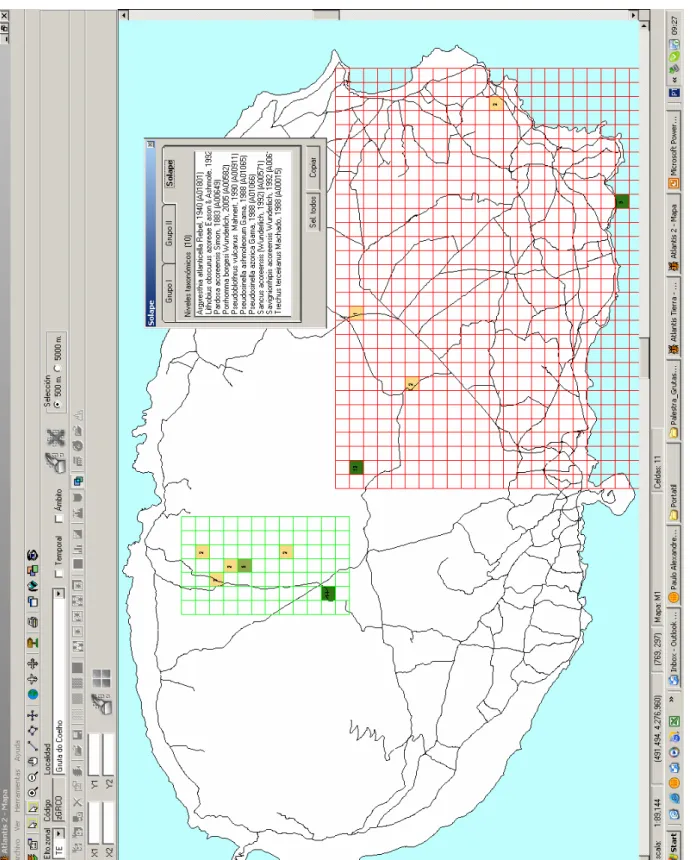PROCEEDINGS OF THE X, XI, AND XII
INTERNATIONAL SYMPOSIA
PROCEEDINGS OF THE X, XI, AND XII
INTERNATIONAL SYMPOSIA
ON VULCANOSPELEOLOGY
Edited by
Ramón Espinasa-Pereña and John Pint
X Symposium
September 9–15, 2002
Reykjavik, Iceland
XI Symposium
May 12–18, 2004
Pico Island, Azores
XII Symposium
July 2–7, 2006
Tepoztlán, Morelos, Mexico
ASSOCIATION FOR MEXICAN CAVE STUDIES
BULLETIN 19
SOCIEDED MEXICANA DE EXPLORACIONES SUBTERRÁNEAS
BOLETÍN 7
AMCS Bulletin 19 / SMES Boletín 7
4
© 2008 Association for Mexican Cave Studies Authors, cartographers, and photogrphers retain the rights to their individual contributions.
Association for Mexican Cave Studies PO Box 7672
Austin, Texas 78713, USA www.amcs-pubs.org
Sociedad Mexicana de Exploraciones Subterráneas Ingenieros 29, Col. Escandón
CP 11800, México D.F., Mexico Printed in the United States of America Cover photograph by Tim Ball.
James Begley in Flóki, Reykjanes Peninsula, Iceland.
Preface
Held at the ex-Convent of Tepoztlán, in the state of Morelos, México, in July 2006, the XIIth
Symposium of Vulcanospeleology was sponsored by the Sociedad Mexicana de Exploraciones Subterráneas
(SMES), the Commission on Volcanic Caves of the International Union of Speleology (UIS), Grupo
Espeleológico ZOTZ, the Association for Mexican Cave Studies, and the State of Morelos Section of the
National Institute of Anthropology and History (INAH). It gathered thirty-eight dedicated researchers
and specialists from three continents, and over twenty-eight different papers were presented.
During the symposium, the fact that no Proceedings had been published of the two previous symposia
was discussed, so a request for these papers was made, with relative success. The abstracts and five
papers from the 2002 symposium are therefore included, together with the abstracts and seven papers
from the 2004 symposium. Together with the eighteen 2006 papers, this volume therefore includes 30
papers. Due to the success of the six field trips taken during and after the XII symposium, the guidebook
is also included.
Topics range from general cave descriptions to highly specialized discussions on volcanic cave
geology, archaeology, and biology. The areas covered include México (the 2006 host country), Hawaii,
the Azores, the Middle East, Japan, and Iceland.
Dr. Ramón Espinasa-Pereña
2006 Symposium Convener
AMCS Bulletin 19 / SMES Boletín 7
8
133
XII Symposium 2006
135
2006 Abstracts
153
2006 Papers
275
2006 Field Trip Guidebook
paper abstract
135
Importance of Lava-Tube Flow Emplacement in the Sierra Chichinautzin Volcanic
Field, Mexico. Ramón Espinasa-Pereña
135
Lava Tubes of the Suchiooc Volcano, Sierra Chichinautzin, México.
Ramón Espinasa-Pereña
136 Sistema Tlacotenco, Sierra Chjichinautzin, México: Maps and Profiles.
Ramón Espinasa-Pereña
158
137
Palaeoenvironmental Reconstruction of the Miocene Tepoztlán Formation Using
Palynology. N. Lenhardt, E. Martinez-Hernandez,A.E. Götz, M. Hinderer,
J. Hornung and S. Kempe
162
137
Comparison between the Texcal Lava Flow and the Chichinautzin Volcano Lava
Flows, Sierra Chichinautzin, México. Ramón Espinasa-Pereña and
Luis Espinasa
168
138
Surveyed Lava Tubes of Jalisco, Mexico. John J. Pint, Sergi Gómez,
Jesús Moreno, and Susana Pint
138
Cueva Chinacamoztoc, Puebla. Ramón Espinasa-Pereña
171
139
Lava Tubes of the Naolinco Lava Flow, El Volcancillo, Veracruz, México.
Guillermo Gassós and Ramón Espinasa-Pereña
139
The Lithic Tuff Hosted Cueva Chapuzon, Jalico, México. Chris Lloyd, John Pint,
and Susana Pint
153
139
Cueva Tecolotlán, Morelos, México: An Unusual Erosional Cave in Volcanic
Aglomerates. Ramón Espinasa-Pereña and Luis Espinasa
140
Limestone Dissolution Driven by Volcanic Activitiy, Sistema Zacatón, México.
Marcus O. Gary, Juan Alonso Ramírez Fernández, and John M. Sharp, Jr.
177
140
Possible Structural Connection between Chichonal Volcano and the Sulfur-Rice
Springs of Villa Luz Cave (a.k.a. Cueva de las Sardinas), Southern México.
Laura Rosales Lagarde and Penelope J. Boston
185
140
Investigation of a Lava-Tube Cave Located under the Hornito of Mihara-Yama in
Izu-Oshima Island, Japan. Tsutomu Honda
141
Jeju Volcanic Island and Lava Tubes: Potential Sites for World Heritage
Inscription. K. S. Woo
141
New Discovery of a Lime-Decorated Lava Tube (Yongcheon Cave) in Jeju Island,
Korea: Its Potential for the World Heritage Nomination . K. C. Lee, K. S. Woo,
and I. S. Son
142
Structural Characteristics of Natural Caves and Yongchon Cave on Jeju Island.
I. S. Son, K. S. Lee, and K. S. Woo
188
142
Recent Contributions to Icelandic Cave Exploration by the Shepton Mallet Caving
Club (UK). Ed Waters
142
Basalt Caves in Harrat Ash Shaam, Middle East. Amos Frumkin
197
143
Prospects for Lava-Cave Studies in Harrat Khaybar, Saudi Arabia. John J. Pint
201
143
Al-Fahde Cave, Jordan, the Longest Lava Cave Yet Reported from the Arabian
9
AMCS Bulletin 19 / SMES Boletín 7
Peninsula. Ahmad Al-Malabeh, Mahmoud Fryhad, Horst-Volker Henschel, and
Stephan Kempe
209
143
State of Lava Cave Research in Jordan. Stephan Kempe, Ahmad Al-Malabeh,
Mahmoud Fryhad, and Horst-Volker Henschel
144
Gruta das Torres—Visitor Center. Manuel P. Costa,
Fernando Pereira,
João C. Nunes, João P. Constância, Paulo Barcelos, and Paulo A. V. Borges
144
GESPEA - Field Work (2003-2006). Manuel P. Costa,
Fernando Pereira,
João C. Nunes, João P. Constância, Paulo Barcelos, Paulo A. V. Borges,
Isabel R. Amorim, Filipe Correia, Luísa Cosme, and Rafaela Anjos
145
Catalogue of the Azorean Caves (Lava Tubes, Volcanic Pits, and Sea-Erosion
Caves). Fernando Pereira, Paulo A.V. Borges, Manuel P. Costa,
João P. Constância, João C. Nunes, Paulo Barcelos, Teófilo Braga,
Rosalina Gabriel, and Eva A. Lima
219
145
Thurston Lava Tube, the Most Visited Tube in the World. What Do We Know
about It? Stephan Kempe and Horst-Volker Henschel
229
145
Geology and Genesis of the Kamakalepo Cave System in Mauna Loa Lavas,
Na‘alehu, Hawaii. Stephan Kempe, Horst-Volker Henschel, Harry Shick, Jr.,
and Frank Trusdell
243
146
Archeology of the Kamakalepo/Waipouli/Stonehenge Area, Underground
Fortresses, Living Quarters, and Petrogylph Fields. Stephan Kempe,
Horst-Volker Henschel, Harry Shick, Jr., and Basil Hansen
147
Cave Detection on Mars. J. Judson Wynne, Mary G. Chapman, Charles A. Drost,
Jeffery S. Kargel, Jim Thompson,
Timothy N. Titus, and Rickard S. Toomey III
147
A Comparison of Microbial Mats in Pahoehoe and Four Windows Caves, El
Malpais National Monument, NM, USA. D. E. Northup, M. Moya,
I. McMillan, T. Wills, H. Haskell, J. R. Snider, A. M. Wright, K. J. Odenbach,
and M. N. Spilde
253
148
Use of ATLANTIS Tierra 2.0 in Mapping the Biodiversity (Invertebrates and
Bryophytes) of Caves in the Azorean Archipelago. Paulo A.V. Borges,
Rosalina Gabriel, Fernando Pereira, Enésima P. Mendonça, and Eva Sousa
260
148
Bryophytes of Lava Tubes and Volcanic Pits from Graciosa Island (Azores,
Portugal). Rosalina Gabriel, Fernando Pereira, Sandra Câmara,
Nídia Homem, Eva Sousa, and Maria Irene Henriques
148
First Approach to the Comparison of the Bacterial Flora of Two Visited Caves In
Terceira Island, Azores, Portugal. Lurdes Enes Dapkevicius, Rosalina Gabriel,
Sandra Câmara, and Fernando Pereira
264
149
Cueva del Diablo: A Batcave in Tpoztlan. Gabriela López Segurajáuregui,
Rodrigo A. Medellín and Karla Toledo Gutiérrez
271
149
Troglobites from the Lava Tubes in the Sierra de Chichinautzin, México,
Challenge the Competitive Exclusion Principle. Luis Espinasa and
Adriana Fisher
149
Uranium in Caves. Juan Pablo Bernal
150
Development of a Karst Information Portal (KIP) to Advance Research and
Education in Global Karst Science. D. E. Northup, L. D. Hose, T. A. Chavez,
and R. Brinkman
150
A Data Base for the Most Outstanding Volcanic Caves of the World: A First
Proposal. João P. Constância, João C. Nunes, Paulo A.V. Borges,
Manuel P. Costa, Fernando Pereira, Paulo Barcelos, and Teófilo Braga
AMCS Bulletin 19 / SMES Boletín 7
10
SUPPLEMENTARY MATERIAL ON THE CD
The CD contains, in addition to the PDF file for this proceedings volume, some material to supplement
some of the articles. In some cases there are additional photographs or maps. In others, I have judged
that a higher-resolution graphic of a map would be significantly more legible than the printed version.
Australian Ken Grimes has provided PDF files of some of the papers referred to in an article and also
a couple of nice color educational posters.—Bill Mixon, AMCS Editor
Folder 2002 Grimes 1. Supplement to X
symposium paper “Subcrustal Drainage Lava
Caves . . . ,” by Ken Grimes.
Image file for additional map of cave H-51.
PDF files of data forms and maps for caves
H-106 and H-108.
PDF files for referenced papers Grimes 1995,
Grimes 2002a, and Grimes 2002b.
Folder 2002 Grimes 2. Supplement to X
symposium paper “A Small Cave in a Basalt
Dike . . . ,” by Ken Grimes.
A PDF file of the version of this paper
published in Helictite in 2006.
Folder 2004 Pint. Supplement to XI symposium
paper “Rare Cave Minerals and Features of
Hibashi Cave . . . ,” by John Pint.
Image file of figure 3 (page 92), map of Ghar
Al Hibashi.
Folder 2006 Al-Malabeh. Supplement to XII
symposium paper “Al-Fahde Cave, Jordan . . . ,”
by Ahmed Al-Malabeh, et al.
Image files of the four sheets of the map
of Al-Fahde Cave, figures 2–5, pages
202–204.
Folder 2006 Espinasa. Supplement to XII
symposium paper “Cueva Tecolotlán . . . ,” by
Ramón Espinasa-Pereña and Luis Espinasa.
Image file of map of Cueva Tecolotlán, figure
2, page 154.
Folder 2006 Kempe. Supplement to XII
symposium paper “Geology and Genesis of the
Kamakalepo Cave System . . . ,” by Stephan
Kempe, et al.
Image file of map of Waipouli (Makai) Cave,
figure 8, page 236.
Folder 2006 Pint. Supplement to XII
symposium paper “Surveyed Lava Tubes of
Jalisco . . . ,” by John Pint, et al.
PDF file containing four additional color
photograph with captions.
Folder 2006 Waters. Supplement to XII
symposium paper “Recent Contributions to
Icelandic Cave Exploration . . . ,” by Ed Waters.
Image files of maps of Lofthellir (page 193)
and Fjárhólahellir (page 194).
Image files of additional maps of Burí,
Hellinger, and Holgóma.
PDF file containing four additional color
photographs with captions.
Folder Grimes posters.
PDF files of color educational posters
prepared in 2005 by Ken Grimes, “Lava
Tube Formation” and “Sub-Crustal Lava
Caves.”
AMCS Bulletin 19 / SMES Boletín 7 — 2006
134
The XII International Symposium on Vulcanospeleology is
sponsored by the Sociedad Mexicana de Exploraciones Subterráneas
(SMES), the Commission on Volcanic Caves of the International
Union of Speleology (UIS), Grupo Espeleológico ZOTZ, Club
de Exploraciones de México A.C., Veracruz Section (CEMAC),
the Association for Mexican Cave Studies (AMCS), and the State
of Morelos Section of the National Institute of Anthropology and
History (INAH).
A total of 37 abstracts were presented, of which 24 will be
oral presentations, 10 will be posters, and there will be three papers
in absentia. Eleven are about México, the host country. There are
papers about Jeju island in Korea, the Azores islands of Portugal
and Iceland in the Atlantic Ocean, Arabia, Jordan and Israel in the
Middle East, and of course, several papers on Hawaii and one on
Japán in the Pacific Ocean. Besides, there are several biospeleology
papers, and several miscelaneous or theoretical papers.
All these information has been arranged into four different
Sessions: México, Rest of the world, Biology and Theoretical.
México Session, Chairman C. Lloyd: Several papers give
information about the Sierra Chichinautzin, where México’s most
important lava tubes discovered to date are located. Other papers will
be about lava tubes in other regions of México. Of special interest
are erosional (or solutional) caves hosted in volcanic deposits, and
two papers on the role of volcanic sulfur in the development of caves
in limestone.
Rest of the World Session, Chairmen K. S. Woo, João C.
Nunes and J. Pint: Most papers in this session are special studies on
numerous caves distributed around the world. We will get a glimpse
of recent advances in the exploration of lava tubes and other volcanic
caves in various geological settings (Continental, Island Arch, and
Midoceanic).
Biospeleology Session, Chairman Luis Espinasa: Several papers
will introduce recent advances in the knowledge of microorganisms
in lava tubes, while the studies of bat population and other species
in the Sierra Chichinautzin provide information on biospeleological
aspects of caves discussed in the México Session.
Theoretical Session, Chairman J. P. Bernal: A paper on
the possible uses of Uranium dating and paleoenvironmental
studies, several proposals for cave data bases, and a very welcome
review of lava tube morphogenesis round up the discussions of the
symposium.
AMCS Bulletin 19 / SMES Boletín 7 — 2006
148
Oral Presentation
Use of ATLANTIS Tierra 2.0 in Mapping the Biodiversity (Invertebrates and Bryophytes)
of Caves in the Azorean Archipelago
Paulo A.V. Borges1,2,3, Rosalina Gabriel3,
Fernando Pereira1,2,3, Enésima P. Mendonça3,
and Eva Sousa3
1 “Os Montanheiros”, Rua da Rocha,
9700 Angra do Heroísmo, Terceira, Açores, Portugal.
2 GESPEA – Grupo de Estudo do Património Espeleológico
dos Açores.
3 Universidade dos Açores, Dep. Ciências Agrárias,
9700-851 Angra do Heroísmo, Açores, Portugal.
In this contribution the software ATLANTIS Tierra 2.0 is described as a promising tool to be used in the conservation management of the animal and plant biodiversity of caves in Macaronesia. In the Azores, the importance of cave entrances to bryophytes is twofold: i) since these are particularly hu-mid, sheltered habitats, they support a diverse assemblage of bryophyte species and circa 25% of the Azorean brioflora is referred to this habitat and ii) species, either endemic or referred in the European red list due to their vulnerability (19 species) or rarity (13) find refuge there. Cave adapted arthropods are also diverse in the Azores and 21 endemic obligate cave species were recorded. Generally these spe-cies have restricted distributions and some are known from only one cave. ATLANTIS Tierra 2.0 allows the mapping of the distribution of all species in a 500 x 500 m grid in a GIS interface. This allows an easy detection of species rich caves (hotspots) and facilitates the interpretation of spatial patterns of species distribution. For instance, predictive models of species distribution could be constructed using the distribution of lava flows or other environmental variables. Using this new tool we will be better equipped to answer the following questions: a) Where are the current “hotspot caves” of biodiversity in the Azores? b) How many new caves need to be selected as specially protected areas in order to conserve the rarest endemic taxa? c) Is there congruence between the patterns of richness and distribution of invertebrates and bryophytes? d) Are environmental variables good surrogates of species distributions?
Poster Presentation
Bryophytes of Lava Tubes and Volcanic Pits from Graciosa Island (Azores, Portugal)
Rosalina Gabriel1, Fernando Pereira1,2, Sandra Câmara1,
Nídia Homem1, Eva Sousa1, and Maria Irene Henriques1
1 Universidade dos Açores, Departamento de Ciências Agrárias,
CITA-A, Centro de Investigação de Tecnologias Agrárias dos Açores. 9700-851 Angra do Heroísmo, Açores, Portugal.
2 “Os Montanheiros”, Rua da Rocha, 9700 Angra do Heroísmo,
Terceira, Açores, Portugal.
Mainly due to historical reasons, Graciosa Island is the poor-est island of the Azores regarding the number of bryophytes (119), especially of rare and endemic species. However, Lava Tubes (Furna da Maria Encantada, Furna do Abel, Galeria
Forninho) and Volcanic Pits (Furna do Enxofre) seem to of-fer refuge to some interesting plants. Previous studies have recorded, among others, the European endemic moss, Homalia webbiana, present only in four of the nine Azorean Islands and with less than 10 localities recorded in the archipelago. The main purposes of the fieldwork were: i) to update with field work, the bibliographic records of bryophytes that may be observed in the volcanic formations of Graciosa; ii) to identify in those formations, endemic bryophyte species (from the Azores, Macaronesia and Europe) and species with a conservation risk associated, according to the European Committee for the Conservation of Bryophytes (ECCB). The results show that although no Endemic plants from the Azores were found at this point, six European endemic spe-cies and four Macaronesian endemic spespe-cies were confirmed in the entrances of these volcanic formations, including one Vulnerable species and three rare species, according to ECCB criteria. In conclusion, besides the rich geological interest of the caves in Graciosa, their entrances continue to harbour rare or endemic bryophytes, not commonly found on other parts of the island, possibly due to the greater stability of these habitats. This is an additional reason to preserve the caves and a further possible motive of interest to all that visit them.
Poster Presentation
First Approach to the Comparison of the Bacterial Flora of Two Visited Caves in
Terceira Island, Azores, Portugal
Lurdes Enes Dapkevicius1, Rosalina Gabriel1,
Sandra Câmara1, and Fernando Pereira1,2
1 Universidade dos Açores, Departamento de Ciências Agrárias,
CITA-A, Centro de Investigação de Tecnologias Agrárias dos Açores. 9700-851 Angra do Heroísmo, Açores, Portugal.
2 “Os Montanheiros”, Rua da Rocha, 9700 Angra do Heroísmo,
Terceira, Açores, Portugal.
“Algar do Carvão” and “Gruta do Natal” are two interest-ing volcanic show caves in Terceira Island. The purposes of this work were: i) to characterize the main groups of bacteria observed on their walls and ceiling in four different illumina-tion condiillumina-tions: darkness, artificial light, half-light and under natural light; ii) to look for Actinomycetales, mainly from the family Streptomyceteae, due to their ability to produce high-value biochemical products; iii) to investigate if the human activities associated with the economic exploitation of the caves (artificial illumination, visiting activities, cattle raising in their vicinities) had ecological impacts on the composition of the local microbial flora. Although it was not possible to isolate Actinomycetales at this point, the preliminary results show that the bacterial flora of both caves was diverse; 52 different isolates were obtained, and these are mostly the result of water infiltration from the overlying fields. In “Algar do Carvão”, the half-light area supported the highest diversity of bacterial flora, with 26 isolates, including mostly bacteria associated with the grazing activity that occurs above the Algar. The most interesting species isolated was Sphingobacterium multivorum, which has the natural ability to accumulate zeaxanthin, a molecule used as a food pigment and which recently has been considered important in eye-health, reducing
253
AMCS Bulletin 19 / SMES Boletín 7 — 2006Abstract
In this contribution the software AT-LANTIS Tierra 2.0 is described as a promising tool to be used in the conser-vation management of the animal and plant biodiversity of caves in Macaro-nesia. In the Azores, the importance of cave entrances to bryophytes is twofold: i) since these are particularly humid, sheltered habitats, they support a diverse assemblage of bryophyte species and circa 25% of the Azorean brioflora is referred to this habitat and ii) species, either endemic or referred in the Euro-pean red list due to their vulnerability (19 species) or rarity (13) find refuge there. Cave adapted arthropods are also diverse in the Azores and 21 endemic obligate
Use of ATLANTIS Tierra 2.0 in Mapping the Biodiversity (Invertebrates and
Bryophytes) of Caves in the Azorean Archipelago
Paulo A.V. Borges1,2,3, Rosalina Gabriel3, Fernando Pereira1,2,3, Enésima P. Mendonça3, Eva Sousa3
1 “Os Montanheiros”, Rua da Rocha, 9700 Angra do Heroísmo, Terceira, Açores, Portugal. 2 GESPEA – Grupo de Estudo do Património Espeleológico dos Açores.
3 Universidade dos Açores, Dep. Ciências Agrárias, CITA-A, 9700-851 Angra do Heroísmo,
Terceira, Açores; pborges@mail.angra.uac.pt.
cave species were recorded. Generally these species have restricted distributions and some are known from only one cave. ATLANTIS Tierra 2.0 allows the map-ping of the distribution of all species in a 500 x 500 m grid in a GIS interface. This allows an easy detection of species rich caves (hotspots) and facilitates the interpretation of spatial patterns of spe-cies distribution. For instance, predictive models of species distribution could be constructed using the distribution of lava flows or other environmental variables. Using this new tool we will be better equipped to answer the following ques-tions: a) Where are the current “hotspot caves” of biodiversity in the Azores?; b) How many new caves need to be selected as specially protected areas in
order to conserve the rarest endemic taxa?; c) Is there congruence between the patterns of richness and distribution of invertebrates and bryophytes?; d) Are environmental variables good surrogates of species distributions?
Introduction
The study of Azorean cave fauna and flora only started in 1988 with two expe-ditions of “National Geographic” under the supervision of Pedro Oromí (Univ. de La Laguna) and Philippe Ashmole (Univ. de Edinburg) and with the support of the speleological Azorean group “Os Montanheiros” (see Oromí et al. 1990, González-Mancebo et al. 1991). After those two expeditions in 1988 and 1990, the University of the Azores and “Os Montanheiros” performed most of the biospeleological work in the Azores (see Borges & Oromí 1994, 2006, Gabriel & Dias 1994). In the Azores, the impor-tance of cave entrances to bryophytes is twofold: i) since these are particularly humid, sheltered habitats, they support a diverse assemblage of bryophyte species and circa 25% of the Azorean brioflora is referred to this habitat and ii) species, either endemic or referred in the European red list (ECCB 1995) due to their vulnerability (19 species) or rarity (13) find refuge there. Cave adapted arthropods are also diverse in the Azores and 21 endemic obligate cave species were recorded (Borges & Oromí 2006). Generally these species have restricted distributions and some are known from only one cave (Borges & Oromí 2006).
There is a general agreement among scientists that biodiversity is under as-sault on a global basis and that species are being lost at greatly enhanced rates due to human processes such as habitat loss and fragmentation, invasive species, pollution and global climate change
Figure 1. Entrance window of ATLANTIS Tierra 2.0, in which it is possible to ob-serve eight possible entrance gateways, the most relevant being the taxonomic reports (“Taxonomía”), information about species (“Consulta de espécies”) and data analysis (“Consulta de análisis”).
AMCS Bulletin 19 / SMES Boletín 7 — 2006
254
(Lawton & May 1995; Chapin et al. 2000). Moreover, some recent studies indicate that there are some concerns related with invasive species and the conservation of native biodiversity in the Azores (Silva & Smith 2004, Borges et al. 2006).
In this contribution, a new software, ATLANTIS Tierra 2.0, is described as a promising tool to be used in the con-servation management of the animal and plant biodiversity of caves from the Azores.
ATLANTIS Tierra 2.0
Since 1998 the Government of the Canary Islands as been conducing an important project on biodiversity, Proj-ect BIOTA (see Izquierdo et al. 2001, 2004). A Visual Basic software, called ATLANTIS Tierra 2.0, was developed for biodiversity data storage. With this database it will be possible to gather detailed information about all species on the surveyed geographical areas of
interest. This software has several im-portant tools, namely a taxonomic tool and a conservation management analysis tool (Fig. 1) that allows the calcula-tion of species richness, their rarity or complementarity in all 500x500 m cells of a particular island or, in any special area in one island.
With this software all the informa-tion we could think of about a species (e.g. the cavernicolous ground-beetle Trechus montanheirorum) is available in clicking the information about species (“Consulta de espécies”) window (see Fig. 2). In this window it is also possible to check the detailed distribution of the species in a 500 x 500 m scale (Fig. 3). With this tool we may also investigate the distribution of the species throughout time in asking for its distribution in dif-ferent time intervals. To each signalized 500 x 500 m grid cell correspond a cave for which the species was signalized in the literature.
However, it is in the data analysis
facility that ATLANTIS Tierra 2.0 is more interesting in terms of its appli-cation in a conservation management study. As an example in Fig. 4 we see the species richness of the European Rare Bryophytes (ECCB 1995) in caves from Graciosa Island (Azores). The grid-cell with the highest number of species corresponds to the location of Furna do Enxofre, currently a volcanic pit protected by law and under the special management of the Government. In Fig. 4 we can see also the list of species in grid cell with the highest number of species and that list could be exported to another software (e.g. Excel).
Very important in conservation man-agement studies is to ask: “Ho many sites are needed to include all species of interest at least once?”. To answer this question, we could use the complemen-tarity procedure, in which we get the minimum set of caves that combined have the highest representation of spe-cies (see Williams 2001). ATLANTIS
Figure 2. Species management window of ATLANTIS Tierra 2.0, in which it is possible to observe the nomenclature of the species, a picture, the distribution of the species in the archipelago (green island) and other relevant information concerning the habitats, conser-vation status, biogeographical origin, etc.
255
AMCS Bulletin 19 / SMES Boletín 7 — 2006Figure 3. Species managment window of
ATLANTIS
Tierra 2.0, in which it is possible to observe the detailed distri
-bution of
Tr
echus montanheir
orum
AMCS Bulletin 19 / SMES Boletín 7 — 2006
256
Figure 4. Data analysis window of
ATLANTIS
Tierra 2.0, in which it is possible to observe the number of bryophyte species in the European Red List present
in caves from Graciosa Island (Azores).
257
AMCS Bulletin 19 / SMES Boletín 7 — 2006Figure 5. Data analysis window of
ATLANTIS
Tierra 2.0, in which it is possible to observe the four grid-cells that are necessary to
include all the endemic arthropods occurring in caves from
AMCS Bulletin 19 / SMES Boletín 7 — 2006
258
Figure 6. Data analysis window of
ATLANTIS
Tierra 2.0, in which it is possible to observe the list of endemic arthropods that occur in two distinct
cave systems at
259
AMCS Bulletin 19 / SMES Boletín 7 — 2006Tierra 2.0 uses the heuristic suboptimal simple-greedy reserve-selection algo-rithm: first, the grid-cell with the highest species richness is selected. Then, these species are ignored and the grid-cell with the highest complement of species (that is, the most species not represented in the previous selected grid-cell), and so on, until all species are represented at least once. One good example of the applica-tion of the complementarity procedure is showed in Fig. 5, in which only four out of the eleven grid-cells with caves are necessary to protect the 26 endemic arthropod species occurring in the caves of this island. Those four grid-cells are signalized with a green dark border (the first selected grid-cell) and with a reddish dark border (the three other selected grid-cells). Therefore, with only four caves well managed we may protect all the endemic arthropod species know to oc-cur in caves at Terceira Island (Azores). However, we should call attention to the fact that the complementarity procedure could be made more complex asking for the minimum set of caves that combined have at least each species represented twice, therefore assuring that species are protected in more than one place.
Another important facility available in ATLANTIS Tierra 2.0 is related with the investigation of the species com-position in different areas of a region. For instance, we could have the list of species that are common in two dif-ferent cave systems (Fig. 6). We could also get the list of species for each cave system and by exclusion obtain the lists of species that are exclusive to each cave system.
Conclusion
There is some urgency in the conserva-tion of the diverse community of mosses and liverworts (Bryophyta) as well as of the rich cave adapted arthropods oc-curring in the Azorean lava tubes and
volcanic pits. The general pattern that emerges is that ATLANTIS Tierra 2.0 will be an important tool not only for the Azorean Government in managing the territory and designing natural protected areas, but also for research in de areas of applied ecology and conservation.
Using the ATLANTIS Tierra 2.0 new tool we will be better equipped to answer the following important questions: a) Where are the current “hotspot caves” of biodiversity in the Azores?; b) How many new caves need to be selected as specially protected areas in order to conserve the rarest endemic taxa?; c) Is there congruence between the patterns of richness and distribution of invertebrates and bryophytes?; d) Are environmental variables good surrogates of species distributions?
Acknowledgements
We wish to thank to Azorean Govern-ment for supporting our trip to Mexico
to participate on the XIInd
Interna-tional Symposium on Vulcanospeleol-ogy (Tepoztlan, Morelos, México, July 2006).
Digital information of the islands was obtained within Project ATLÂNTICO— INTERREG IIIB, with permission of “Instituto Geográfico do Exército” under contract nº 047/CCO/2003.
References
Borges, P.A.V., Lobo, J.M., Azevedo, E. B., Gaspar, C., Melo, C. & Nunes, L.V. (2006). Invasibility and species richness of island endemic arthropods: a general model of endemic vs. exotic species. Journal of Biogeography 33: 169-187.
Borges, P.A.V. & Oromí, P. (1994). The Azores. In. C. Juberthie & V. Decu (Eds.) Encyclopaedia Biospeleolog-ica. Tome I . pp. 605-610. Sociétè de Biospéleologie, Moulis.
Borges, P.A.V. & Oromí, P. (2006). The
Azores. In. C. Juberthie & V. Decu (Eds.) Encyclopaedia Biospeleolog-ica. Tome Ia Amérique et Europe. pp. ???. Sociétè de Biospéleologie, Moulis.
Chapin III, F.S., Zavaleta, E.S., Eviner, V.T., Naylor, R.L., Vitousek, P.M., Reynolds, H.L., Hooper, D.U., Lavorel, S., Sala, O.E., Hobbie, S.E., Mack, M.V. & Díaz, S. (2000) Con-sequences of changing biodiversity. Nature 405: 234-242.
ECCB (1995) Red data book of Europe-an bryophytes. EuropeEurope-an Committee for the Conservation of Bryophytes. Trondheim.
Gabriel, R. & Dias, E. (1994). First approach to the study of the Algar do Carvão flora (Terceira, Azores). in: Actas do 3º Congresso Nacional de Espeleologia e do 1º Encontro Internacional de Vulcanoespeleologia das Ilhas Atlânticas (30 de Setembro a 4 de Outubro de 1992), pp. 206-213. Angra do Heroísmo.
González-Mancebo, J.M., Losada-Lima, A. & Hérnandez-Garcia, C.D. (1991). A contribution to the floristic knwoledge of caves on the Azores. Mémoires de Biospéologie, 18: 219-226.
Lawton, J.H. & May, R.M. (1995) Ex-tinction Rates. Oxford University Press, Oxford.
Oromí, P., Martin, J.L., Ashmole, N.P. & Ashmole, M.J. (1990). A preliminary report on the cavernicolous fauna of the Azores. Mémoires de Biospéolo-gie, 17: 97-105.
Silva, L. & Smith, C.W. (2004) A charac-terization of the non-indigenous flora of the Azores Archipelago. Biological Invasions, 6: 193-204.
Williams P. (2001). Complementarity. In: Levin S. (ed.), Encyclopaedia of Biodiversity, Volume 5. Academic Press, pp. 813-829.




